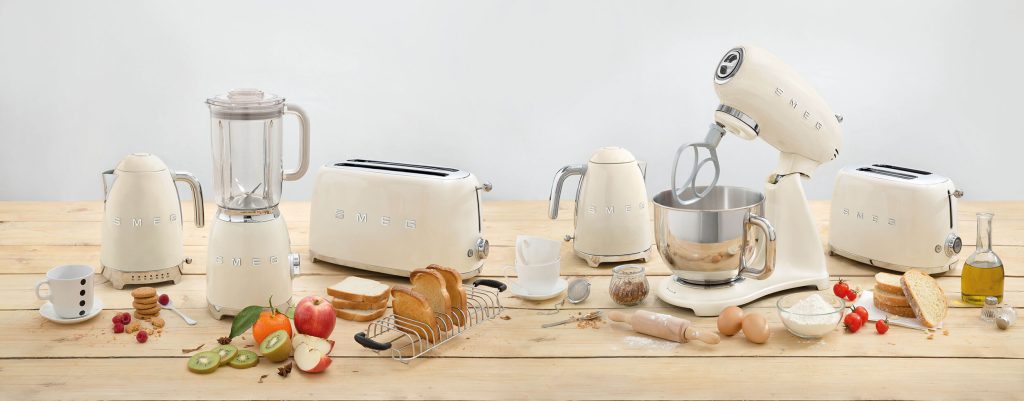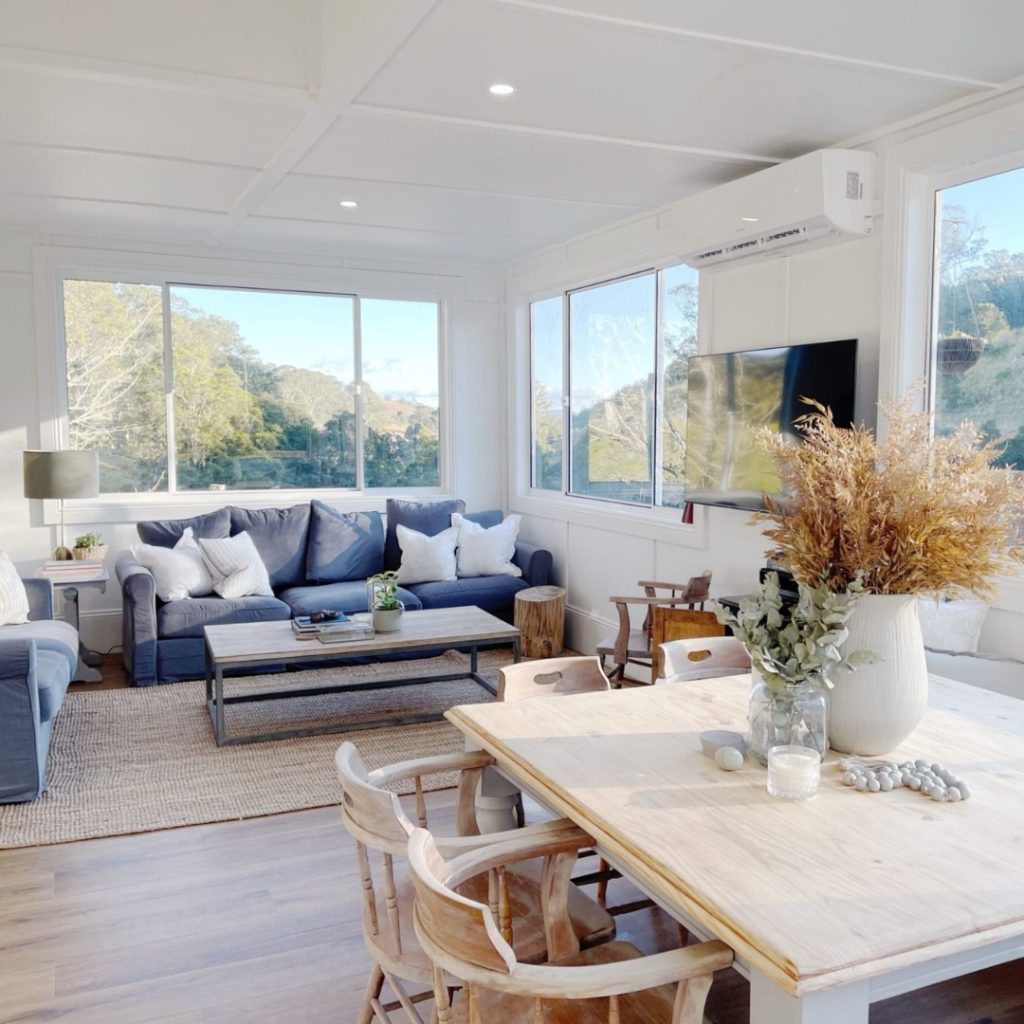In the aftermath of Sustainable House Day, we run through the alphabet of energy-saving products featured at the Home Show.
Wait, there’s a day for sustainable houses? Yes! But unlike other days including #WorldMigratoryBirdDay or #WorldTurtleDay, you get to check out some pretty impressive feats of architecture. #neato. In 2018, over 33,000 people were inspired by 226 energy-efficient homes across Australia. Almost $14,000 was raised for charities through gold coin donations.
?
Check out efficient houses in your area
Tasmania – ACT – Western Australia – South Australia –
?
The Home Show contains all the individual components for an energy-efficient home in one place. Whether you want to undertake a full-blown renovation, or chip away with bite-sized cost-effective projects, the Home Show has something for everyone.
A is for Appliances ?
Energy Star
There are thousands of fridges, washing machines, dishwashers, ovens, TVs and other appliances at the Home Show. Where do you start?
Thank your lucky stars for Energy Star Ratings; red and yellow stickers on appliances (by law) to us save money on power bills.
There are two parts to the sticker; stars and energy consumption. One common mistake people make with stars is not taking appliance size and capacity into account. Stars are only useful if you compare two models of the same size. Such as two fifty-inch TVs. So, if you compare the stars of a 32-inch TV and a 50-inch TV, it might seem that both TVs will cost the same to run. In reality, the 50-inch TV will always use more electricity.
Which brings us to energy consumption, the accurate energy indicator. A typical fridge might use 340 kWh per year, which will cost you roughly $95 per year on average. Now, that doesn’t sound like much right? Try adding up the costs from all your appliances; see why your quarterly power bill packs a punch? Small fridges might have the lowest energy consumption, but if you have a large family, you’ll need two fridges for all that food! Inversely, don’t buy a large refrigerator for a single-person household.
In short – choose a high star product that suits your needs!
C is for Cooling ?
Mouritz Gas & Air
“100% Australia made, the reverse cycle air conditioning system, the ActronAir, will help massively reduce running costs,” exclaimed Jason from Jeff Mouritz Gas & Air.
If you live in Queensland, Northern Territory or Western Australia, there’s no escaping air conditioning. The downside of such comfort is uncomfortable power bills.
Reverse cycle air conditioning (heat pump) is the most efficient way to cool your home. The same mechanism that cools a fridge also cools your home and is reversed to produce heat.
Engineered for Australia, ActronAir’s Classic ducted system operates within a range -10°C to 50°C. Unlike conventional inverters, it promises to instantly cool your environment, operating at 85% more capacity in stifling 46°C heat.
D is for Doors ?
ECO Smart
For many years, Australia has gotten away with cheap single glazed doors. On the other side of the pond, Europeans have perfected double and triple insulated glass. It has been standard issue for decades in countries like Germany, UK, Sweden, Norway and Finland which have freezing winters. As the Greek philosopher, Plato said,’ Necessity is the mother of invention.’
Now we’re seeing growing energy prices and the rise of environmental consciousness, Australia is playing catch-up. Enter ECO Smart Double Glazing; importing decades of innovation and refinement. Perfect fittings for front, side, laundry or garden doors.
Rob showed off some of the security features, “The multi-point locking and shoe bolts, located bottom and top in three points, exceeds any Australian standards and insurance requirements.”
Best of the rest
|
• Aluminium or uPVC |
• Low-E glass |
|
• 28mm double glazed units …….. |
• Solar reflective panels |
|
• Argon gas filled panes |
• Slide handle up to lock |
|
• Warm edge spacer bar |
H is for Heating ?
Foster Hydronic Heating

Inspiration from another nation comes in the form of hydronic heating. This is a fancy word for radiators and underfloor heating. The system is so damn efficient that it’s the preferred heating method of Germans, and they know efficiency.
Zac from Foster Hydronic Heating explained it in the most Australian way possible, “Circulated water flows from the bottom, up through the guts of the house to the radiator panels. They can be individually controlled thermostatically or turned on-and-off individually.”
Zac goes on to say that a typical house needs 10 – 11 units which, at $1000 apiece, will keep you toasty for $11,000. Apartments and smaller dwellings will cost considerably less.
To power and pump all this molten-hot water around these radiators, you’ll need a beefy boiler. Luckily, ridiculously reliable German brand Bosch manufacture boilers with a five-year warranty.
H is for Heating & Cooling ?
Ventis Home Ventilation
Remember ex Wallabies Captain George Gregan? He sells heating systems now! The warm air that collects in the attic is re-circulated to the rest of the house. This works in tandem with existing systems and in some climates, does away with heating altogether. It’s the halfway point between passive design and traditional heat pumps.
Let’s hear what our man George has to say, “It’s a really smart, simple system. It utilises what’s already free, which is free natural cool air and warm air. And it costs maybe 20 cents a day. And what’s also important is that it’s ventilated. So people who suffer from allergies are taken care of.”
Features
|
• Eco-friendly |
• Fresh and clean air |
|
• Cost-effective……. |
• Lowers humidity |
|
• Natural |
F is for Filming ?
Complete Film Solutions
Not Netflix films, but instead a paper-thin transparent film that maintains the temperature inside your home. UV transmission, reflection, reduction and rejection. It’s all about keeping the sun’s burning hot rays out while letting light in.
Brent from Complete Film Solutions demonstrated this concept on the Home Show floor. He set-up two identical lamps, one is shining through a pane of clear glass and the other glass covered with 3M Prestige 70 film. Using a digital thermometer, he shows the temperature though the clear glass is reaching a blistering 271 BTU (British Thermal Unit) and through the Prestige, a temperate 19 BTU.
Brent talks us through his second experiment, “One [house] uses a piece of clear glass. The other has Thinsulate coating with a low-E coating which reflects the heat back into the building. Both cabinets are set at 30 degrees and contain a heat lamp that builds heat up, when it hits thirty degrees it turns off.
Since we started using this cabinet at the Home Show, the clear glass has used 449Wh of energy, and the Thinsulate has used 326Wh. That’s about 25% power saving right there, using just film.”
I is for Insulation ?
SIPS Industries
Why has Lego remained so popular for over 80 years? Simplicity x practicality. And that’s precisely what Structural Insulated Panels (SIPs) have been achieving for over 50 years worldwide. The panels are pre-manufactured and can be assembled in just one week.
Lee from SIPS Industries assembled their value, “We make walls, floors and roof panels out of these. They’re highly insulated and very structural. Basically, they’re going to give you a warm house in the winter and a cool house in the summer. Considerably better than traditional building materials, very environmentally friendly and sustainable.”
<span data-mce-type=”bookmark” style=”display: inline-block; width: 0px; overflow: hidden; line-height: 0;” class=”mce_SELRES_start”></span>
Interviewer Wombat (the Block) replied, “I think the best thing about these things is you don’t actually need a frame. You just build with these panels, so you can knock up a house pretty quick.”
L is for Lights ?
BoomerangRed
We have an abundance of lights at the Home Show and LEDs, making up 99% of the selection. The reason for this is because older incandescent bulbs use 80% more energy and have a mere 10% lifespan. With the extinction of incandescent bulbs, anything you buy will be the right choice.
That doesn’t make it any easier navigating an ocean of colours, lumens, shapes, sizes and smart tech inside each bulb. Then, there’s a myriad of lamps, enclosures and applications to choose from. And finally, if you made it this far, where you place lights has become a science in its own right.
Luckily, we had lighting designer, Adele Locke, come in to shine some light on her philosophy of lighting.
The folks over at BoomerangRed have crafted some impressive ornaments using just wood and lights, perfect for any wo/man cave.
T is for Transport ?
Tesla Model 3
“We came down to the Home Show to check out the tiny homes, but this [Tesla] caught our eye. [Our son] Jasper enjoyed touching all the buttons,” laughed family man Alex.
How you get to and from A-to-B is a crucial factor in living an energy-efficient lifestyle. How fast you do this is less important, but a fun by-product of Tesla’s new electric Model 3.
The breakdown
|
• $73,135 (drive-away price) |
• AWD |
|
• 5-Star Overall ANCAP Rating…….. |
• 620km range |
|
• 0-100 km/h in 3.4 seconds |
• 233km/h top speed |
W is for Water Heating ?
Sanden
Gas, electric and solar. Each method carries pros and cons which need to be weighed up based on your location, local energy prices and climate. The Sanden Hot Water Heat Pump System is the most efficient in its electric category, saving you up to 80% on your hot water bill.
Mark from Sanden watered it down for us, “It’s like an air conditioner in reverse. We take the humidity out of the environment and pump it into the tank. We use an environmentally friendly refrigeration unit giving us the best energy savings on the market. Not only is this the most efficient product, but also the quietest at 38 decibels (quiet library). Which, in the Home Show background, is really hard to hear. We have a 315-litre tank that delivers enough hot water for a family of four.”
| Tank size/shape | No. of persons using hot water | Typical dwelling | STC rebates? |
| 160L | 2-4 | Units / Townhouses | Yes |
| 250L | 3-5 | Residential | Yes |
| 300L | 4-6 | Residential | Yes |
| 315L | 4-6 | Residential | Yes |
W is for Windows ?
Zenit
Serge from Zenit Windows walks us through the new Australian import, “the Eco minimal system is a non-thermally broken system, priced very competitively. The smart thing about the system is the way it moves. The cranking down of the handle lifts the unit up. Once it’s up, self-levelling rollers can move 450Kgs of glass.”
There are 12 windows on average in an Australian home. Single glazed windows are like holes in a sinking ship, with heating systems working overtime to bail out cold air. If you live near a noisy road, installing double glazed sound barriers should be enough reason to correct your ship’s course. Ahoy!
“Our bread and butter is the tilt and turn system. The majority of windows in Europe are tilt and turn. When you close the window and turn the handle, the rubber tightens all around the perimeter, creating a seal. For a little bit of ventilation, you don’t have to open the entire window, you can just use the tilt option.”
Cutting edge features
| • Thin design | • Smooth operation |
| • Large glass (3 x 6 metres)………. | • Triple, double or argon glass |
| • Hidden hardware | • Drainage |
| • Multi-point locking | • Keep sound, heat and cold out |



